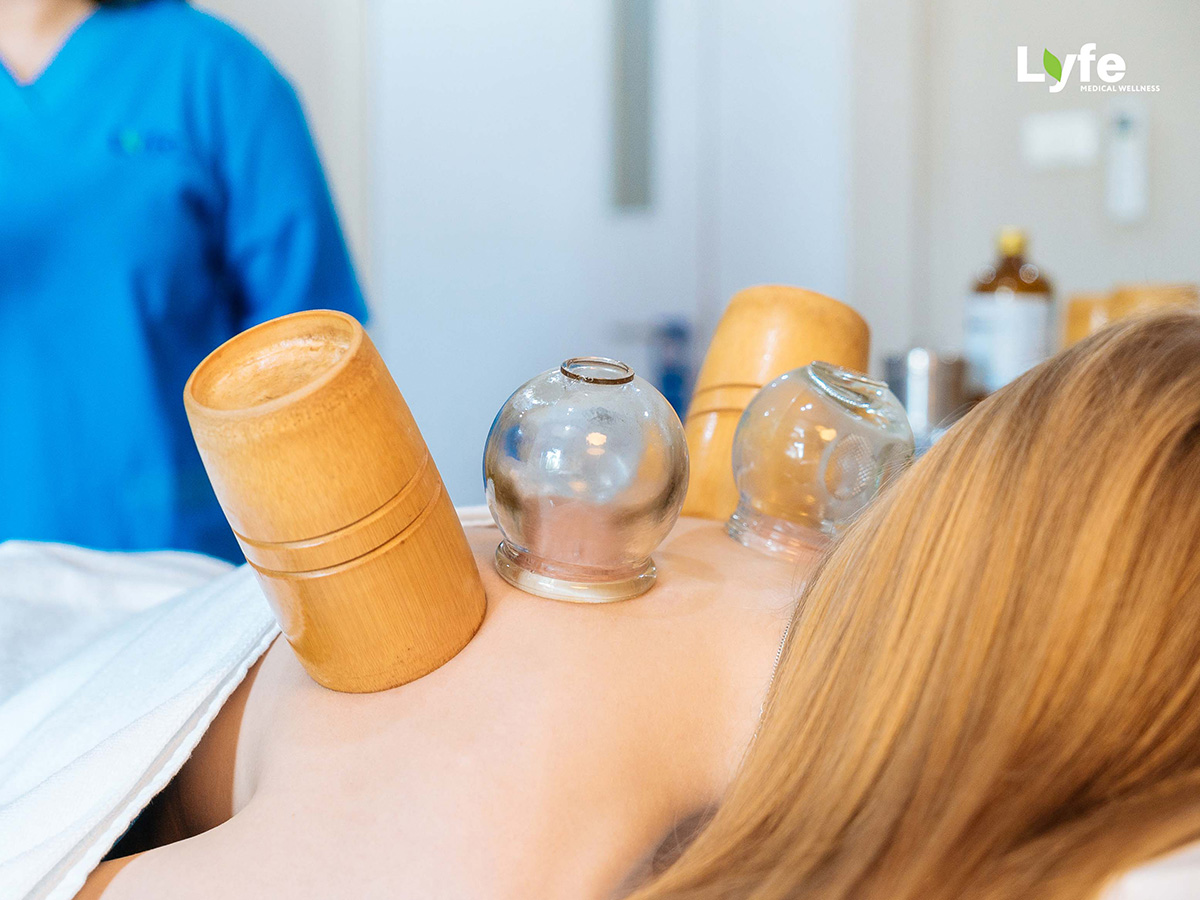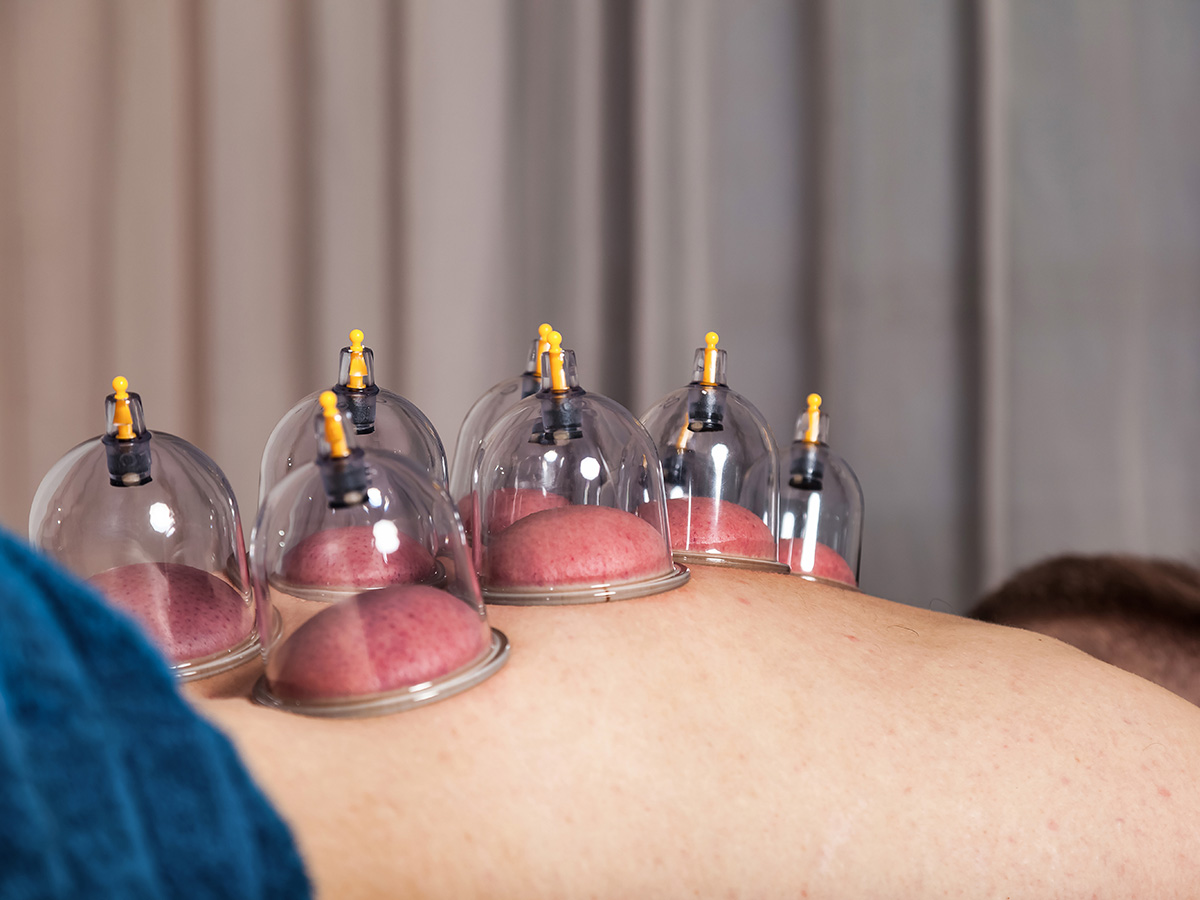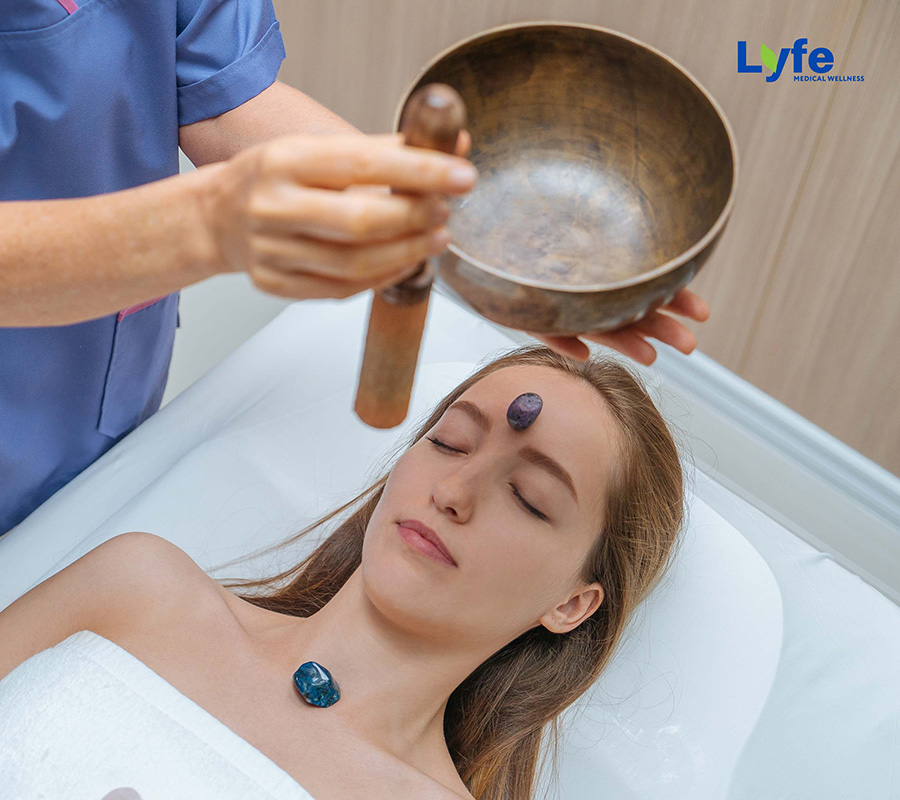What is cupping Therapy?
Cupping is a type of alternative therapy that originated in China. It involves placing cups on the skin to create suction. The suction facilitates healing with blood flow, as well as the flow of “qi” in the body. Qi is a Chinese word meaning life force.
Cupping increases blood circulation to the area where the cups are placed. This can relieve muscle tension, which can improve overall blood flow and promote cell repair. It can also help form new connective tissues and create new blood vessels in the tissue. People use cupping to complement their care for a host of ailments and conditions.
What are the different types of cupping?
Cupping was originally performed using animal horns. Later the “cups” were made from bamboo and then ceramic. The suction was primarily created through the use of heat. The cups were originally heated with fire and then applied to the skin. As they cooled, the cups drew the skin inside.
Modern cupping is often performed using glass cups that are rounded like balls and open on one end. There are 3 ways that famous of cupping performed today:
What should I expect during a cupping treatment?
During a cupping treatment ;
With dry cupping, the cup is set in place for a set time, usually between 5 and 10 minutes. With wet cupping, cups are usually only in place for a few minutes before the practitioner removes the cup and makes a small incision to draw blood. In air cupping, a suction cup is attached to the base of the cup which is used in creating the vacuum. In wet cupping, the skin is punctured before the cupping process during which some amount of blood flows inside the cup. This is believed to remove toxins from the body.
After the cups are removed, the practitioner may cover the previously cupped areas with ointment. This helps prevent infection. Any bruising or other marks usually go away within 10 days of the session.
Cupping is sometimes performed along with acupuncture treatments. For best results, you may also want to fast or eat only light meals for 2 to 3 hours before your cupping session.
What conditions can cupping treat?
Cupping has been used to treat a wide variety of conditions. It may be particularly effective at easing conditions that create muscle aches and pains. Since the cups can also be applied to major acupressure points, the practice is possibly effective at treating digestive issues, skin issues, and other conditions commonly treated with acupressure.
Cupping therapy that suggests its healing power may be more than just a placebo effect. The researchers found that cupping therapy may help with the following conditions, among others:
What scientists say about cupping?
How safe is cupping? Does it hurt?
Cupping is a relatively safe process; air cupping that does not include the risk of burning is considered the safest of all. The drawing up of the skin may cause minor swell or bruise on the skin. As the skin is drawn under the cup, it leads to the expansion of blood vessels. This will result in small circular, painless marks where the cups were applied. The marks usually vanish in a couple of days after treatment.
However, there are some complicated cases whereby it is not advisable to apply the cupping treatment e.g. fever, convulsion, and people prone to bleeding. Cupping should not be applied to the stomach and lower back of pregnant women.



